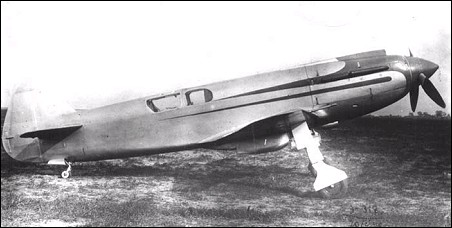| Alan, e-mail, 15.06.2011 08:41 From Wikipedia, the free encyclopedia
After working as an engineer under Tairov at the OKO in Kiev, Bisnovat was permitted to form his own OKB with the task of designing and building a high speed research aircraft, which emerged as the SK-1. This aircraft was designed to have the smallest airframe capable of flying powered by a large V-12 engine, with the smallest wings possible for safe landings on Soviet grass airfields.
Construction of the SK-1 was of light-alloy stressed skin, with single plate web spar wings skinned with light-alloy sheet, smoothed to mirror finish accurate profiles using marquisette fabric, cork dust, open weave and adhesive as filler. Initially the wing was of NACA 23014.5 profile with slotted Vlasov style flaps, and fabric covered ailerons. The tail-unit also had fabric covered control surfaces, and trim tabs, with all controls 100% mass balanced.
The M-105 engine was fitted in a low drag installation with a pressurised coolant system which required a radiator of only 0.17m^2 frontal area, (approx ½ that of a similar unpressurised coolant system). In the flush cockpit, the pilot sat on a hydraulically actuated seat which raised the hinged roof of the canopy to form a wind-shield for landing, allowing the fuselage to have a total frontal area of only 0.85 m^2. Hydraulically retractable main and tail undercarriages with fully closing doors reduced drag even further.
Test flights began in January 1939 with the aircraft on skis, with surprisingly good handling and manoeuvrability as well as excellent performance. reply |











